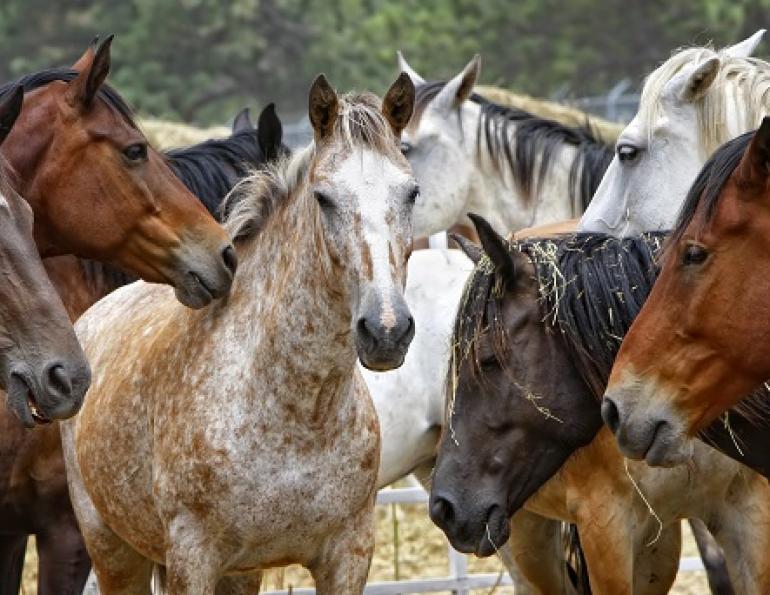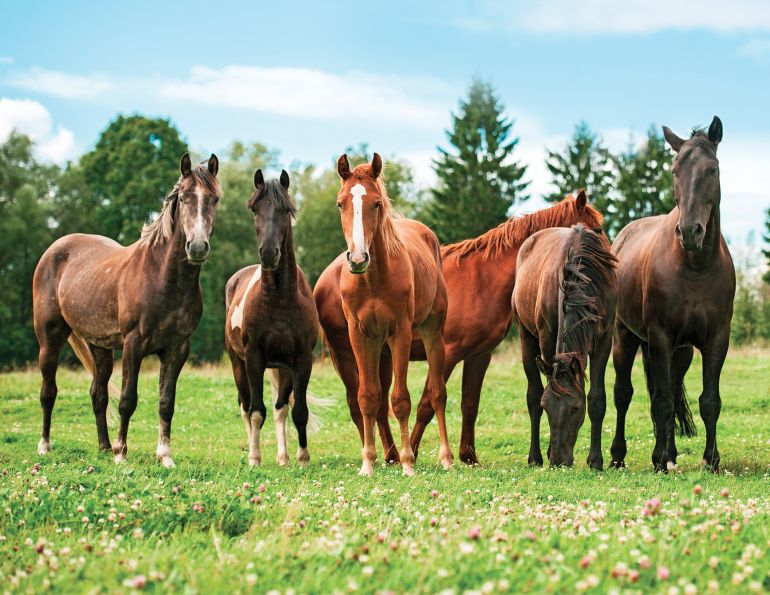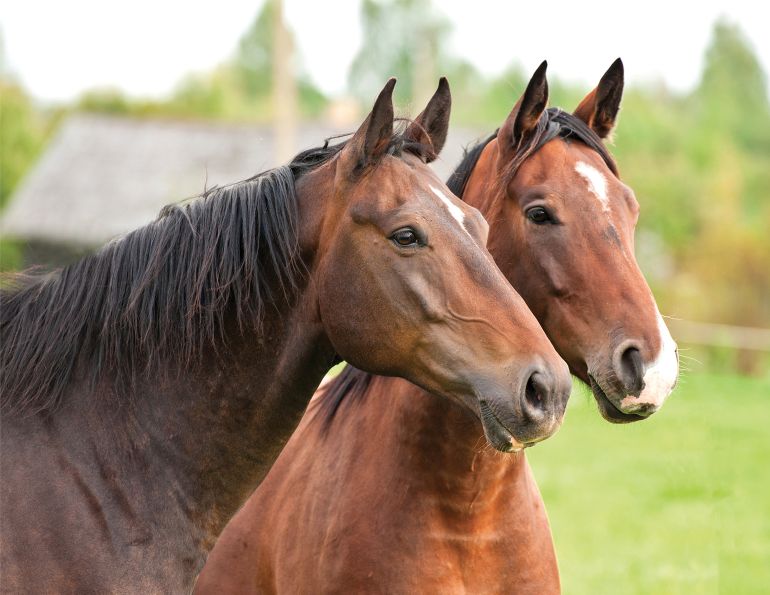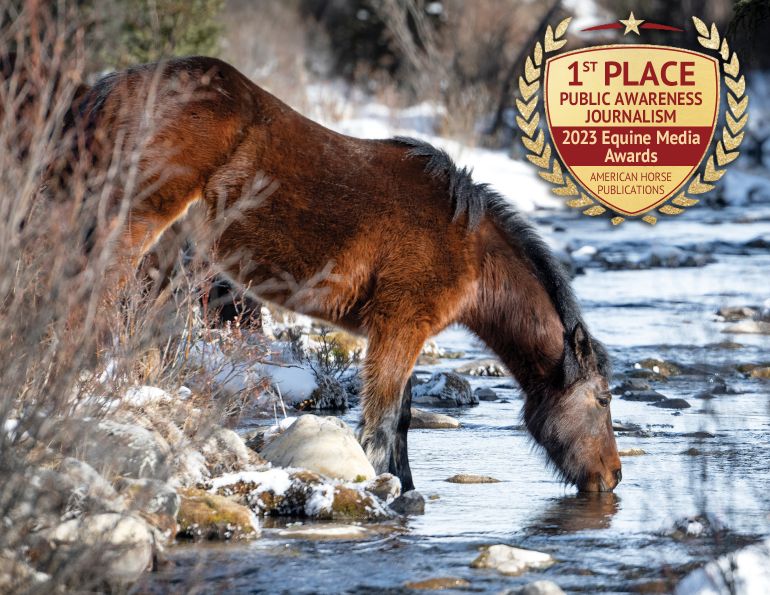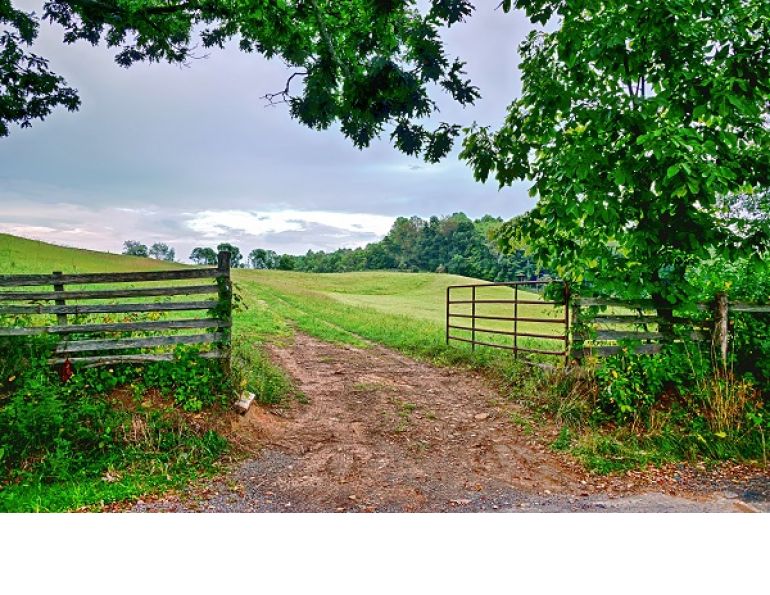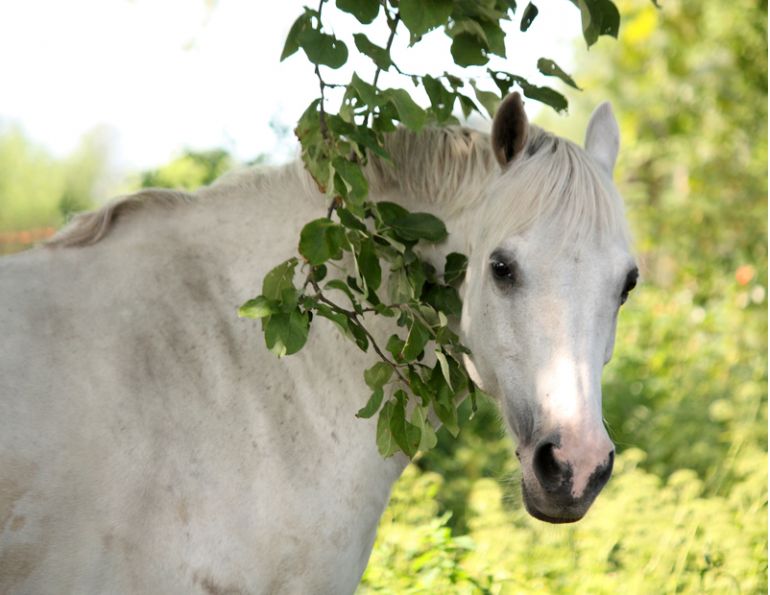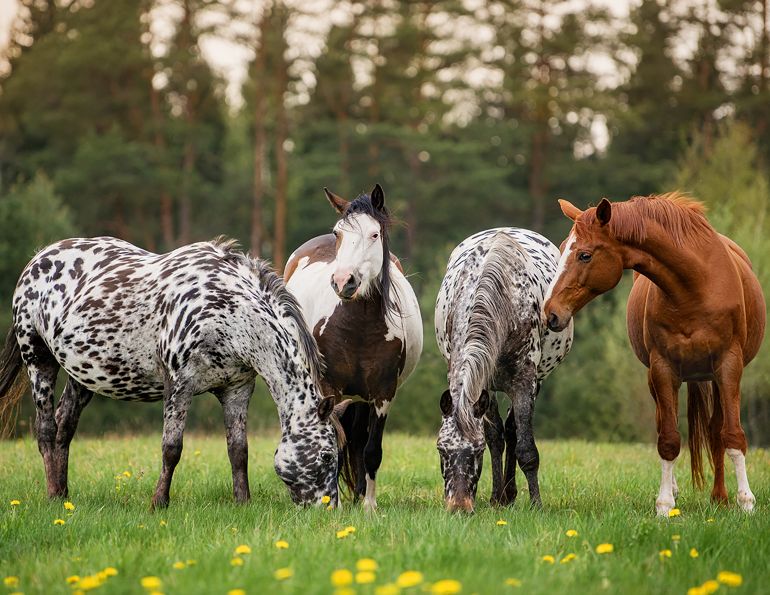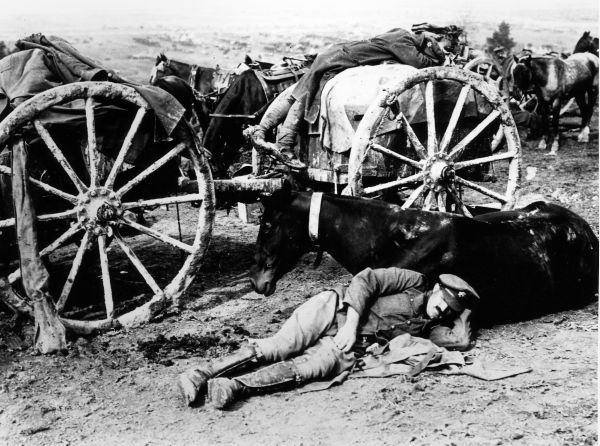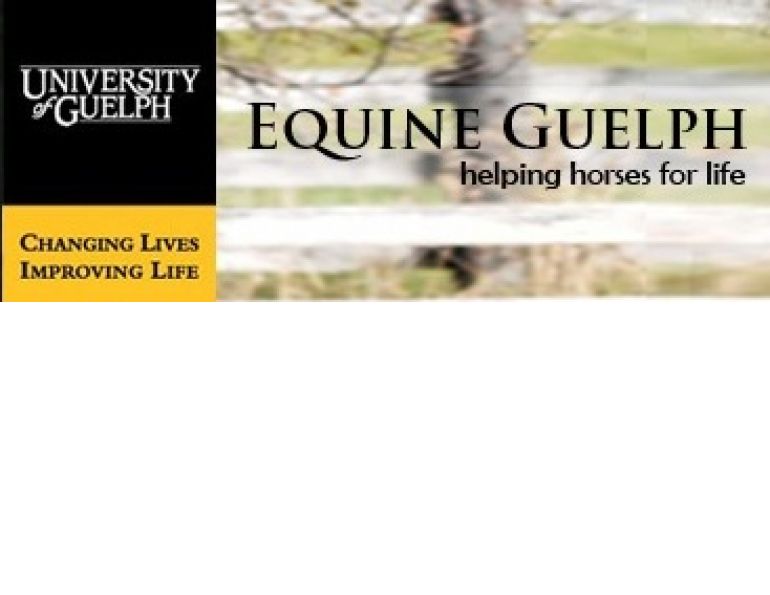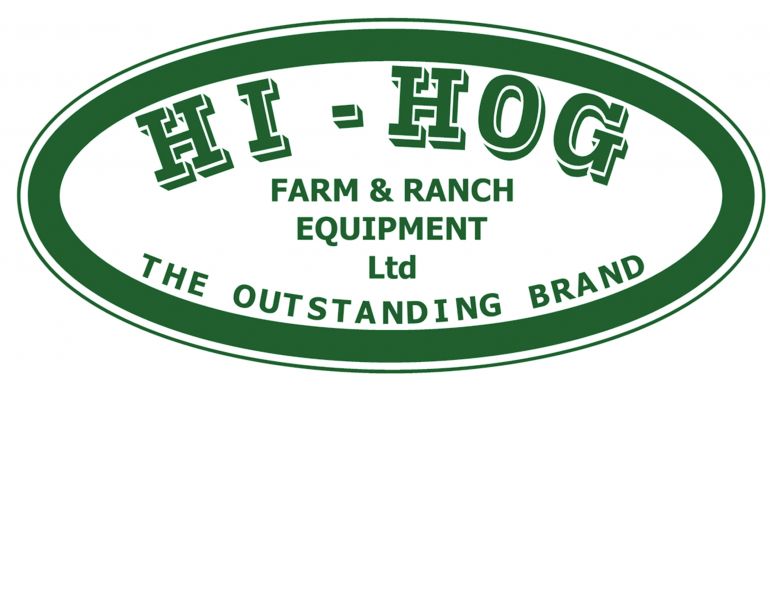Would a market for horsemeat reduce a welfare crisis?
By Margaret Evans
Click Here for Letters in response to this article.
Should restaurants offer lukba on the menu? What about basashi? Or sauerbraten? And what about the celebrated French dish countrefilet? Other dishes they could offer might be kazy, umido, charqui, or sate jaran.
In November 2013, Princess Ann, the Princess Royal, was delivering a speech at the annual conference of the World Horse Welfare charity of which she is president. During her speech she made a remark that turned everyone on their heads, caused just a bit of an uproar in England, and was widely reported in the national media.
She was referring to a horse welfare crisis in the UK. Winter was approaching and it was estimated that some 7,000 horses were at risk of abandonment, severe neglect, or starvation. Equine aid agencies were already bulging at the seams as they tried to cope with horses that owners no longer wanted or could no longer afford. Stabling, pasture, feed, farrier, and veterinary needs were all huge expenses that were becoming more and more difficult to meet. So Princess Anne tossed out the one-liner as a possible solution.
“Owners might take better care of their horses if they believed they could sell them for meat,” she is reported to have said.
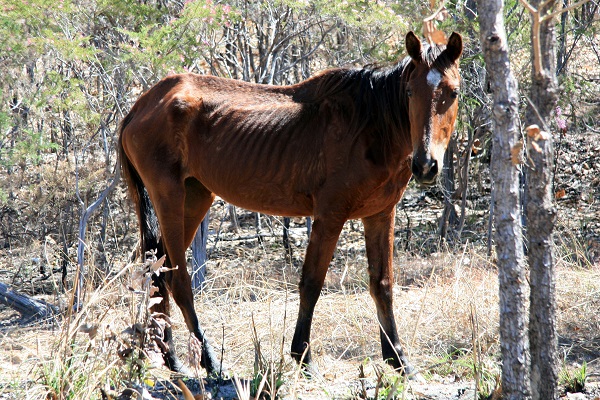
In November 2013, Princess Ann, President of the World Horse Welfare charity, commented that if owners believed their horses could be sold for meat they might take better care of them and thus reduce the number of equine welfare cases. Photo credit: ©CanStockPhoto.com/Imagex.
Rather than scorning her words that seemed counter to cultural values, some animal welfare charities viewed her suggestion with an open mind. The highly controversial topic was at least worthy of debate. The RSPCA and other equine charities needed answers as to what to do with so many neglected horses. Perhaps a domestic horsemeat market would not only alleviate the chronic welfare crisis but also serve UK’s multicultural population with an alternative food choice.
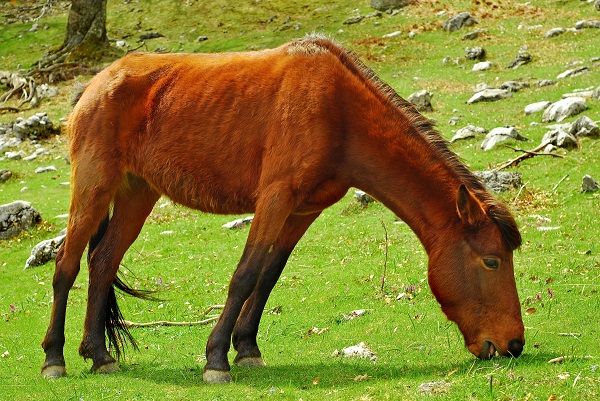
Neglect comes from lack of care and concern, and from the owners placing no value on an animal they are unable to sell. In recent years, the price of horses has fallen and the result has been an increase in the number of welfare cases across the country. Photo credit: ©CanStockPhoto.com/Cristi180884
Princess Ann, a gifted equestrian and former Olympic competitor, knew the consequences of her words in horse-crazy England. Historically, horses had always been more valuable alive as working animals and used for exploration, settlement, and war. They are still used on farms and ranches and as draught animals for hauling goods. And, of course, horses have been used in competition for centuries. Among many cultures, horses remain deeply iconic, and they symbolize the growth and expansion of civilizations.
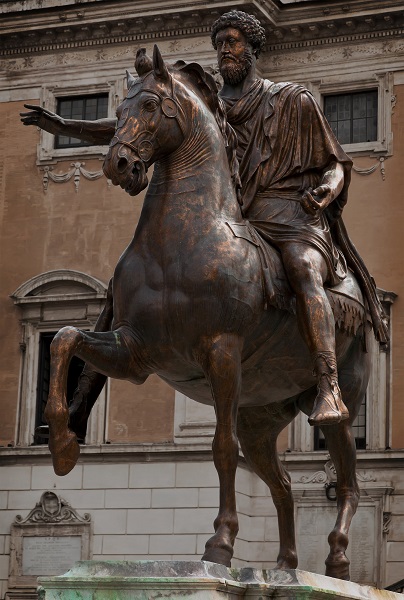
Horses symbolize the growth and expansion of civilizations, and in many cultures they remain truly iconic. Pictured is the original bronze equestrian statue of Marcus Aurelius, an ancient Roman statue in the Campidoglio, Rome, Italy, standing 3.5 m tall. Photo: ©CanStockPhoto.com/v0v
But in recent years, horse values have plummeted to rock bottom lows and the blunt fact, known to many in the horse world, is that a horse is worth more as meat.
Princess Anne decided to put the idea out there, for what it was worth. It was time to think outside the box. She said in her speech that British attitudes toward horsemeat may have to change and that the whole cultural acceptance of eating horses was at least worthy of a conversation.
The question she posed was: Should we consider a market for horsemeat, and would that reduce the number of welfare cases if there was real value in the horsemeat sector?
That question could just as well be floated in Canada. In 2014, the British Columbia Society for the Prevention of Cruelty to Animals (BC SPCA) seized over 100 horses. But according to Marcie Moriarty, SPCA chief prevention and enforcement officer, there are possibly thousands of horses in the province that are neglected or abused, and the SPCA simply can’t reach them all.
Those numbers are likely reflected right across the country. Neglect comes not only from sheer lack of care or lack of concern but it can also come from people thinking they can make money breeding backyard horses, only to find they have produced mediocre, unsaleable horses that still need to be fed. The offspring is often doomed to an uncertain future.
Backyard breeding sources unknown genetics, horses poorly matched, or simply bad luck. The practice can put too many horses on the market, plunge horse values, and result in too many unwanted and discarded animals that have to be cared for one way or another. Sometimes that management puts them in the auction and in the hands of the meat buyer.
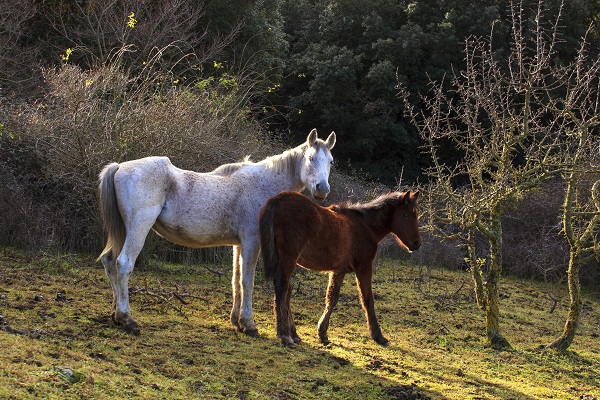
Backyard breeding contributes to the number of unwanted horses by producing mediocre horses for which there is no market, and leaving the resulting offspring to face an uncertain future. Photo credit: ©Thinkstock/Depsimage
The horsemeat industry is far bigger than many people realize. Over one billion people, or 16 percent of the global population, eat horsemeat, mostly in Europe and Asia. According to the United Nations Food and Agriculture Organization, in 2005 nearly 960,000 tonnes of horsemeat were consumed, an increase of 27.6 percent over 1990 figures when nearly 690,000 tonnes were eaten.
According to the Canadian Meat Council, in 2011 89,000 horses were slaughtered in Canada and the average gross domestic product (GDP) value of the exported horsemeat was $5.08/kilogram compared to the average value of $4.46/kg for beef and $2.69/kg for pork. Of Canada’s production output, Quebec, where a culturally distinct palate appreciates a horsemeat cuisine, consumes about 2,000 tonnes a year. A horse will dress out at 35 to 50 percent of its gross weight, depending on its conformation, and generally the domestic price per kilogram is higher than for other red meat products.
According to UN Food and Agriculture Organization (FAO) figures, in 2012 some of the top countries that consumed horsemeat included China (193,000 tonnes), Mexico (83,350 tonnes), Russia (48,000 tonnes), and Kazakhstan (75,000 tonnes).
The Canadian Meat Council stated in a report on their website that in 2012 Canada exported 17.7 million kilograms of horsemeat valued at almost $90 million to 15 different countries. The major markets were Switzerland, Japan, France, Belgium, and Kazakhstan.
In addition, Canada exports horsemeat to the United States. It is not for human consumption but as a supply to feed zoo animals. Horsemeat is widely fed to animals in zoos across Canada and the US where carnivores are fed meat originating exclusively from horses slaughtered in plants inspected by the Canadian Food and Inspection Agency (CFIA). The diet formulations are based on the Toronto Zoo Carnivore Diet which provides guidelines for the specific nutritional needs of wild and captive bred felines, canines, and small carnivores with respect to their varying needs for protein, fats, fibre, vitamins, and minerals.

Horsemeat from horses slaughtered in plants inspected by the CFIA is widely fed to zoo animals in Canada and the US.
Many wild carnivores prefer horsemeat over other meat products such as beef. The meat fed is drug-free and of a standard that would meet human consumption needs. Horsemeat most closely approximates wild meat and, compared to beef, it is leaner, has more amino acids, and contains more vitamins such as B-6, B-12 and C.
By all accounts, people who have eaten horsemeat will attest to how delicious it is. It is a tender, sweeter, fat-free, close-fibre red meat similar to deer or moose but without the gamey taste. In terms of nutritional value, a four ounce piece of horsemeat has 20 percent more protein than high quality beef cuts, 50 percent less fat, nearly 20 percent less sodium, and 50 percent more iron. In some areas of Quebec, medical doctors recommend that patients who are iron deficient eat horsemeat to bolster their iron intake.
The horsemeat can be cooked in a range of meals. It can be used to replace beef or pork in just about any recipe and does extremely well in soups, stews, and grills, or smoked and made into salami. Kazy is a Kazakhstan sausage dish. Basashi is a Japanese dish and is raw meat served in thin slices that are dipped in soy sauce with ginger and onions. Lukba is a Philippines delicacy in which the meat is marinated in lemons, soy, and fish sauce then lightly fried. Sauerbraten is a German braised meat dish. Charqui is a form of jerky eaten in Chile. Sate jaran is a Javanese dish made of chunks of horsemeat served in a spicy sauce.
Many people logically argue that if we slaughter and consume beef cattle, pigs, lambs, and chickens, why not horses? The answer is a complex mix of history, culture, and emotion. The notion of consuming horsemeat has been taboo among many cultures for centuries. In the eighth century, popes Gregory III and Zachary instructed Saint Boniface, a missionary to Germany, to forbid the eating of horsemeat by the converted due to its association with Germanic pagan rituals. Horsemeat is forbidden in Jewish dietary laws because horses are not cloven hoofed and they are not ruminants. In Islamic law, consumption of horsemeat is discouraged, but not forbidden.
In Canadian society, horsemeat is generally not eaten except in Quebec where it is widely consumed. Across the country there are a few specialty butchers where horsemeat is available and a few restaurants will serve horsemeat dishes.
Many people’s aversion to eating horsemeat comes from the fact that we are, quite simply, emotionally tied to them. We value horses as pets, partners in sport, recreational companions, and friends in physical and psychological therapy. We give them names, buy endless accessories for them, provide them with more blankets than we have on our own beds, give them baths, braid their manes with coloured ribbons, protect them from parasites, fit them with shoes, make carrot cakes for their birthdays, decorate their stalls at Christmas, and colour-code their saddle pads with our initials. How do you eat that?
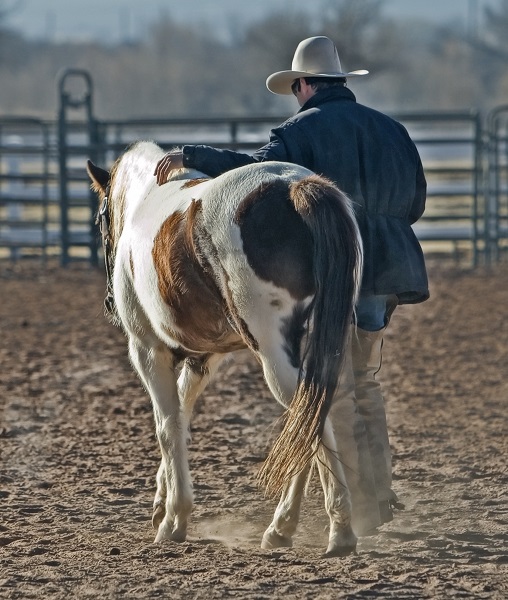
Above and below: Our bond with horses is strong. Down through the ages, they have been our friends, our partners in work and sport, and have served and died alongside us in war. Given our emotional ties with horses, many people are repulsed by the idea of eating horsemeat. Yet others argue: If we consume beef, pork, lamb, and poultry, why not horse? Photo credit (above): ©Thinkstock/Design Pics-Darren Greenwood
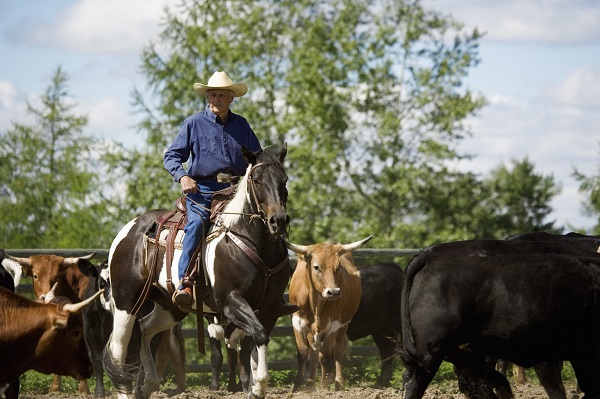
Responding to pressure to stop horse slaughter in the States, the US government enacted a law in 2007 that effectively banned horse slaughter in the country. But it came with terrible unintended consequences which were eventually brought to Canada’s doorstep. With no horse processing facilities available, owners had few options for moving their animals. Very quickly, there were too many horses on the market. Horse prices plummeted and owners who would normally take their animals to auction found themselves without a saleable outlet. The unwanted horses were abandoned, abused, neglected, or left to starve to death. Thousands of horses were loaded up and shipped to Canada for slaughter, effectively dumping an American problem in Canada’s lap. Currently, some 35,000 horses are still sent to Canadian processing plants.
“The Horse Welfare Alliance of Canada [HWAC] was started in 2008 because of horse welfare concerns,” said Bill desBarres, chair. “In 2007 the slaughter plants were shut down in the US. We were getting tremendous problems with horses in terrible shape coming to Canada from the US for slaughter. The Canadian Food Inspection Agency (CFIA) helped very much in getting things straightened away. We formed the Horse Welfare Alliance to address the problem of the welfare of horses that glutted the market, reduced the prices of horses, reduced the profitability of breeders, and created a very large welfare problem in the US and Canada.”
The focus of HWAC is equine health and welfare, education for horse owners, caregivers, transporters, industry stakeholders, and the public, liaison with government departments and agencies, and the monitoring of the health and welfare of the Canadian herd. Part of that commitment to horse welfare includes overseeing the humane end-of-life options.
“Different markets look for different products,” said desBarres. “For horses there are different markets that look for different conformation. Some like them young, older, lighter, or young and heavy like draft horses. Canada has an excellent reputation in providing some live horses to some of these countries. On a regular basis we ship 5,000 to 10,000 live horses to Japan each year through Calgary. That’s one market. They are purpose bred to go there and Japanese buyers will come here to select specific horses.”

Canada ships up to 10,000 live horses to Japan each year through Calgary. Some are purpose-bred for this market, and Japanese buyers come to Canada to select certain horses.
According to desBarres, there are five federally registered facilities that perform horse slaughter in Canada. Two are in Alberta, two in Quebec, and one in British Columbia. Some 500 people are employed in the horsemeat sector and over 85 percent of Canada’s horsemeat is exported.
In 2013 horsemeat was discovered in European meat products that were labelled as meats other than horsemeat. None of those products were exported from Canada or imported into Canada, but the problem caused a sweeping backlash in Europe. As a result, the European Union (EU) introduced reforms to strengthen their equine passport identification system so that all European-born horses will have their movements and medical records traced throughout their lifetime. This will also document such major concerns as the presence of drug residues in horses slaughtered for human consumption.
It was this concern that resulted in the EU’s Food and Veterinary Office (FVO) suspending the importation of horsemeat from Mexico because of questions around horses’ medical and drug treatment records and the traceability of horses to specific vendors. In addition, the FVO’s 2014 audit revealed serious animal welfare problems during transport or at slaughterhouses respecting euthanasia, humane handling devices, and methods being shown to be inadequate to provide humane care for the animals. It is reported that some 87 percent of the horses processed in Mexico originated in the United States.
The Canadian Meat Council stated on its website that the CFIA performs daily inspections in all federally registered meat establishments to verify that the operator is producing meat products that are manufactured in accordance with federal food safety and humane rules and regulations. The Agency will randomly test meat for any pesticides, drug residues, or environmental contaminants. The testing is based on scientific standards set out by the UN FAO and the World Health Organization. Any adverse detection results in an increase in testing and, if necessary, removing the product from the supply chain.
According to Agriculture and Agri-Food Canada, traceability is the ability to follow animals, plants, food products, or ingredients from one point in the food supply chain to another. Livestock traceability is based on three elements – animal identification, premise identification, and animal/product movement. The traceability system is an effective tool to protect animal health, public health, and food safety. They reduce response time and limit economic, environmental, and social impacts through a fast response to disease outbreaks.
Currently, Canada has industry-led animal identification systems for cattle, bison, and sheep and there exists an Equine Identification Document for horses originated by CFIA. Equine Canada has been working for a number of years on an enhanced equine identification system and the Horse Welfare Alliance has been ready since its inception to cooperate with Equine Canada.
“We have a database ready to go and it will integrate globally,” said desBarres. “We need it to be available to all horse people in Canada. The database will also serve as a performance indexing database for any club so they can rate their animals in terms of how they are doing in performance. We have programs that will do that. It’s absolutely necessary for selling abroad. Our database will integrate with the world system of identifying livestock.”
HWAC has been working with Ontario-based Animal ID Solutions who have developed a sophisticated, state-of-the-art identification and traceability system to meet comprehensive levels of animal identification that have never been required in the past. The system, Equine Traceability Canada (ETC), can provide a complete profile of any horse including identification, health records, veterinary drug use, tracking, performance, and passport requirements. The objective is to minimize risk and disease spread or outbreak, and safeguard human health as well as to enhance live and product export opportunities.
The reformed horse identification electronic database being put in place by the EU will need to be dovetailed with the existing CFIA Equine Identification Document, but that document may prove to be insufficient for the EU’s future enhanced standards. CFIA may be required to provide a more sophisticated program if horses or their products are to continue to be exported to Europe. The HWAC/Animal ID Solutions database would, according to desBarres, more than meet the EU criteria.
If the federal government fails to act on an upgraded system it could mean that Canadian horses and/or their products would be refused entry to the EU, putting some 35,000 to 40,000 horses annually at risk of becoming unwanted and facing a potentially harsh and uncertain future.
Horse slaughter isn’t for everyone. However, many believe that the choice of end-of-life options for their horse is a democratic right. Slaughter for meat is an emotional, controversial topic and its roots are deeply embedded in our culture. But, properly done, it offers a humane end-of-life option for some horse owners who may have few places to turn.
A year ago when Princess Ann floated the idea that eating horsemeat could reduce an equine welfare crisis, she began a debate with many convoluted layers. The discussion will no doubt continue for some time to come.
This article was originally published in the Equine Consumers’ Guide 2015, the special January/February edition of Canadian Horse Journal.
Letters - Below are the letters in response we have received so far:
Good Article on Important Topic
I want to express my appreciation and complements to Canadian Horse Journal and Margaret Evans for the balanced and well written article on the issue of horse meat, published in your 2015 Equine Consumers’ Guide.
I wanted also to correct a minor error relative to the situation in the United States. In fact no US federal law has been passed prohibiting the processing of horses for meat. What happened in 2007 was the appropriations for funds to pay the horse meat inspectors was withdrawn, with the consequence that the plants had to shut down. Since it is not possible for private interests to pay the wages of government employees, there was no alternative.
It is not necessary to go into all the details of what has happened subsequently, but needless to say a battle is still raging at a variety of levels in the United States. For additional information one can contact the United Horsemen organization.
On another note, I would like to raise the thought that horse meat is the ethical meat. I make this argument based on the idea that horses are given the opportunity to live long and useful lives, in large measure living out an expression of their “horseness,” albeit not always choosing their role, but nevertheless generally enjoying a long life under the care of loving owners. In contrast, our primary meat animals live short lives in conditions many of us are uncomfortable contemplating. Chickens six weeks, pigs six months, and cattle perhaps eighteen months.
We live in a world of immense inequities. The distribution and consumption of the world’s resources is incredibly unfair. The luxury of using these resources to feed our horses is going to be increasingly difficult to justify as we move toward a population of nine billion people, especially if we, at the end of their lives, turn our beloved animals into toxic waste by euthanizing them with toxic drugs, then cremate them and pollute the air with heavy metals. This is not environmentally responsible and definitely not sustainable. If we love our horses and want to preserve the opportunity for future generations to enjoy and benefit from the amazing interaction with these magnificent animals, we are going to have to show true respect and honour them by accepting their final contribution as sustenance for a hungry world.
I grant you that for those of us who are close to horses, who work with them daily, who love and enjoy an intense level of interaction with them, this is a difficult and emotionally challenging concept to embrace. Nevertheless the concept of the “sacred circle of life,” of living an ethical, ecologically responsible life, without unnecessary waste is ultimately more emotionally rewarding than the anthropomorphic emotional stance currently adopted by so many. This is a cultural paradigm that needs to shift for horses to continue as a significant part of our future.
Equine Canada has developed the Equine Life-cycle Management Policy, called the Five R Program, which is a good start in trying to raise awareness around this issue from unplanned foals to a humane death. Unfortunately, it is not a front page campaign, but we hope that this initiative will gain momentum. It might merit a feature article at some point.
Once again, thank you for a very good article on a subject that is of utmost importance to our industry. To ensure a viable future for horses in our society we need to continue to bring this out of the closet and expose it to the light of rational discourse.
– Chris Gould
A Fresh Angle, Credible Statistics
"I received copies of the Equine Consumers’ Guide yesterday, thank you. An excellent edition. Particularly, your article on The Edible Horse is very well balanced and informative with credible statistics.
You have provided a fresh angle for many who may be less informed. CONGRATULATIONS."
- Bill desBarres, AB
An Informative Overview
"Kathy, I just wanted to write and complement your magazine and Margaret Evans on an excellent article. Margaret’s approach to the processing of horses for meat is likely the best one I have seen in the public press. She stayed to the facts, keeping the emotion out of the article, to give a very informative overview of the whole horse processing situation."
- Les Burwash, AB
Horse Slaughter Not a Solution
"If horse slaughter is a solution to abandoned, abused, and unwanted horses, then why do we have these problems in North America where anyone can send their horse to auction where it may be purchased by a meat buyer? Someone who neglects their horse will do it whether or not they have slaughter available to them. Creating a market for horse meat only encourages more breeding, and certainly isn’t an economic boost to someone selling old Dobbin to the meat buyer.
In your article prices for horse meat are stated as being higher than compared to beef, [but] at the start of the slaughter pipeline you certainly don’t see those prices. Here in Alberta, auction horses that typically end up at slaughter currently fetch about 30 cents/pound. In the last 10 years we’ve never seen prices higher at auction than 50 cents/pound, with a healthy young horse selling for anywhere from $100 - $250. Over this same period of time, a calf could fetch from a low of $600 to a high of $1500.
We are a horse rescue facility and we are constantly dealing with a dilemma. Should we be saving the young horses that are the result of over-breeding but are healthy, sound, and easy to re-home? Or should we be saving the older horses that are more expensive (because they are valued “per pound” - as a result of the slaughter industry!) and may have minor health or soundness issues, but have given their lives to serving people and are now facing auction, feedlots, and ultimately slaughter? And while the focus of CFIA is on ‘humane’ slaughter at the slaughter house, it is the handling that the horses get on their way to slaughter, at auctions, during hauling, and at feedlots, that is often inhumane. We see horses at auctions that ought to have been euthanized, not hauled to an auction, but they are at the auction because the owner wants to get that last few dollars that the slaughter industry will provide.
Suggesting that horse slaughter is a solution to horse welfare issues is like saying euthanasia in pet shelters has been the solution to unwanted dogs and cats. It has never been a solution; it has been a stop-gap that temporarily stems the tide but doesn’t turn it. With the increase in no-kill shelters and the focus being on spay and neuter, THAT is what is making a difference, without needlessly costing animals their lives. Especially in North America, controlling breeding would go a long way toward alleviating the problem of unwanted horses. Industries that use horses carry a lot of the blame - Thoroughbred, Quarter Horse, and Standardbred racing, and disciplines that discard horses as soon as they aren’t winning, and breed registries that encourage breeding in large numbers in the hopes of getting that one winning horse."
- Kathy Bartley, Bear Valley Rescue Society, AB
We Don’t Eat Our Pets
"I am ashamed of any person who would think of sending a horse, once loved and useful, on to be slaughtered because of some extremely misguided “ethics.”
Do I have to remind anyone that, in this country, WE DON’T EAT OUR PETS. Some civilizations think nothing of dining on dog and cat meat and using their skins to make mittens. Can you imagine the public outrage that would ensue by justifying dog and cat meat as “ethical” simply because they live longer lives than livestock, euthanizing is toxic, and cremation is polluting? Never heard such candy coated nonsense.
Horses cannot be compared to other livestock – cows, pigs, chickens, etc. – in that from the day the vast majority are born they are taught to trust and be working partners to humans. The only difference between horses and the smaller companion animals such as dogs and cats is, because of their great size, they do not live in our homes. But they are no less our trusting companions.
Sending a horse to slaughter is inhumane and unfair on any level. After serving man’s needs all its life, all it receives for its trouble is a pathetic trip to a slaughterhouse?
As far as I know, horses can legally be shipped for more than 24 hours without food or water. That is not to say the horses weren’t hungry or thirsty before being loaded onto the kill buyers’ trucks. Or that they will be fed and watered the moment they are unloaded.
Horses also differ from other livestock. A horse is a much larger, stronger, and more sensitive animal (which is why we can ride them in the first place). They react badly in crowded conditions, mortally wounding other horses, or falling down and being trampled in the mayhem.
It has also been well documented that abuse and torture of animals takes place at slaughterhouses. No one can watch them all the time. Maybe killing animals attracts the mentally disturbed in the first place I don’t know, but minimally, the animals are treated harshly by individuals. Time is money, men can be cruel, and the final days of the life of the animal that has done more for mankind than all other companion animals combined will end in confusion, terror and pain. What’s ethical about that?
I only need pick up a newspaper to see the latest on man’s inhumanity to man, so no surprise there are so many horse owners willing to dump a horse like garbage for a few bucks. The smaller companion animals of these same people are fortunate. No price for their meat or skins. At least not in this country. That’s quite a disturbing thought, isn't it?"
– Jackie Emary
What is your opinion? Please register/comment below, or email us at news@horsejournals.com.
Main photo: ©Thinkstock/Roger Branch



